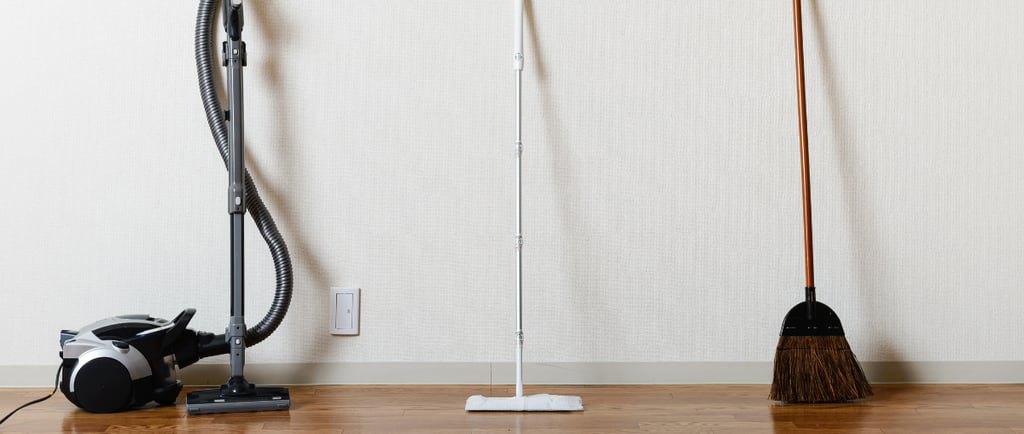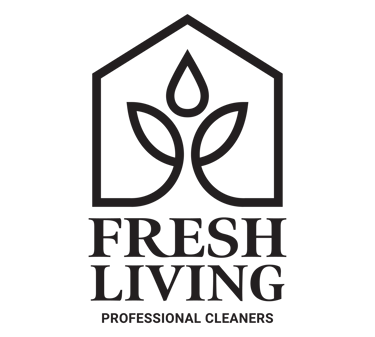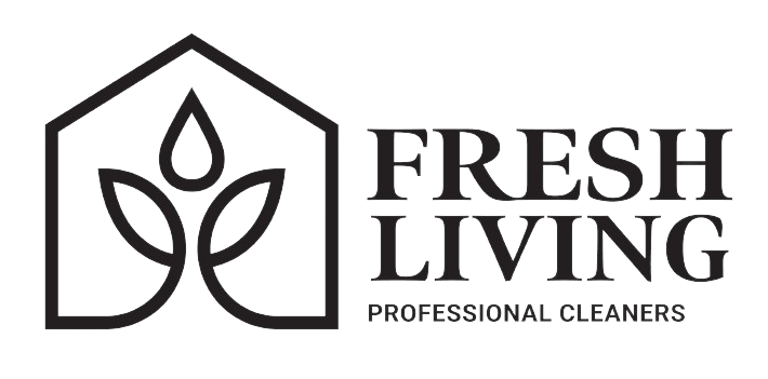Get It Right: Using Cleaning Equipment Properly
Maintaining a clean and healthy environment is more important than ever, and the key to achieving this is using cleaning equipment correctly. Whether you’re tidying up your home, office, or any other space, knowing how to handle your cleaning tools can make all the difference. Not only does proper use ensure a thorough clean, but it also extends the lifespan of your equipment, saving you money in the long run. In this guide, we’ll explore everything you need to know about using cleaning equipment properly, from selecting the right tools to mastering effective techniques. Let’s dive in and get it right together!
6/6/20245 min read


Importance of Proper Cleaning Equipment Use
Proper use of cleaning equipment is essential for maintaining a hygienic environment. Not only does it ensure effective cleaning, but it also prolongs the life of your tools, preventing unnecessary expenses.
Overview of Common Cleaning Tools
From brooms to pressure washers, a variety of tools are available to tackle different cleaning tasks. Understanding how to use each tool correctly can significantly enhance your cleaning routine.
Understanding Cleaning Equipment
Types of Cleaning Equipment
Cleaning tools range from simple brooms to complex machines like vacuum cleaners and pressure washers. Each has a specific purpose and application.
Choosing the Right Tools for the Job
Selecting the appropriate tool depends on the surface and the type of dirt or grime. For example, a soft-bristle broom is ideal for indoor floors, while a hard-bristle broom works better outdoors.
Preparing Your Cleaning Tools
Inspecting Equipment for Damage
Before using any cleaning tool, inspect it for wear and tear. This step ensures safety and effectiveness during use.
Cleaning and Maintaining Tools Before Use
Proper maintenance, such as washing mop heads or clearing vacuum filters, is crucial. This practice not only enhances performance but also ensures hygiene.
Proper Use of Brooms and Dustpans
Selecting the Appropriate Broom
Different brooms serve different purposes. Indoor brooms typically have finer bristles, while outdoor brooms are sturdier.
Effective Sweeping Techniques
Sweeping in a consistent, overlapping pattern helps gather debris efficiently. Avoid lifting the broom too high to prevent scattering dust.
Using a Dustpan Correctly
Ensure the dustpan lies flat on the floor to collect all debris. Use a hand brush to sweep remnants into the pan for thorough cleaning.
Mops and Buckets
Types of Mops and Their Uses
From string mops to flat mops, each type is suited for different surfaces. Microfiber mops are excellent for trapping dust and dirt.
Preparing Your Mop and Bucket
Fill the bucket with the right amount of water and cleaning solution. Avoid over-wetting the mop to prevent excess moisture on floors.
Mopping Techniques for Different Surfaces
For tile floors, use a figure-eight motion. On wooden floors, follow the grain to avoid streaks and damage.
Vacuum Cleaners
Types of Vacuum Cleaners
Vacuum cleaners come in various forms: upright, canister, robotic, and handheld. Each type is designed for specific cleaning needs.
Using a Vacuum Cleaner Correctly
Adjust the vacuum settings according to the surface. Regularly empty the dustbin or replace the bag to maintain suction power.
Maintenance and Troubleshooting
Check for blockages in hoses and filters. Clean or replace filters regularly to ensure optimal performance.
Cleaning Cloths and Sponges
Selecting the Right Cloth or Sponge
Microfiber cloths are excellent for most surfaces due to their absorbency. Sponges with scrubby surfaces can tackle tougher stains.
Techniques for Effective Cleaning
Wipe surfaces in an S-pattern to avoid spreading dirt. Rinse cloths and sponges frequently during use.
Sanitizing Cloths and Sponges
Regularly sanitize by soaking in a bleach solution or microwaving damp sponges. This practice prevents the spread of bacteria.
Brushes and Scrubbers
Different Types of Brushes
From soft brushes for delicate surfaces to stiff brushes for heavy scrubbing, the variety is extensive.
How to Use Brushes Effectively
Use the right brush for the job to avoid damage. Apply even pressure and scrub in a circular motion for best results.
Cleaning and Storing Brushes
Rinse brushes thoroughly after use and store them upright to dry. This prevents the growth of mold and mildew.
Cleaning Solutions and Chemicals
Understanding Different Cleaning Agents
Each cleaning agent is designed for specific tasks, such as disinfecting, degreasing, or polishing.
Proper Mixing and Usage
Follow the manufacturer’s instructions for mixing. Use the right amount to avoid residue and ensure effectiveness.
Safety Precautions
Always wear gloves and ensure proper ventilation when using chemicals. Store them out of reach of children and pets.
Glass and Window Cleaning Equipment
Tools for Cleaning Glass Surfaces
Squeegees, microfiber cloths, and specialized glass cleaners are essential for streak-free windows.
Techniques for Streak-Free Windows
Clean in a vertical then horizontal motion. Use a squeegee for large windows and wipe the edges dry to prevent drips.
Maintenance of Glass Cleaning Tools
Keep squeegees clean and replace the rubber blades as needed. Store tools in a dry place to prevent deterioration.
Floor Cleaning Machines
Types of Floor Cleaning Machines
These include floor scrubbers, polishers, and steam cleaners. Each machine has a specific function and application.
Operating Floor Cleaning Equipment
Follow the manufacturer’s instructions for use. Ensure the machine is suitable for the floor type to avoid damage.
Routine Maintenance
Regularly check and clean the machine’s components. Replace worn-out parts to maintain efficiency.
Carpet Cleaners
Types of Carpet Cleaning Machines
There are steam cleaners, shampooers, and dry cleaning machines. Each method has its advantages for different types of carpet.
Proper Use of Carpet Cleaners
Vacuum the carpet before using a cleaner. Follow a systematic approach to cover the entire area evenly.
Tips for Maintaining Carpet Cleaners
Empty and rinse the tanks after use. Clean the brushes and nozzles to prevent clogging.
Pressure Washers
Choosing the Right Pressure Washer
Select a washer with appropriate pressure for the task. Higher PSI is suitable for tough jobs, while lower PSI is better for delicate surfaces.
Safe and Effective Pressure Washing
Maintain a safe distance from the surface being cleaned. Use the correct nozzle to avoid damage.
Pressure Washer Maintenance
Regularly check hoses and nozzles for blockages. Follow the maintenance guidelines provided by the manufacturer.
Personal Protective Equipment (PPE)
Importance of PPE in Cleaning
PPE protects against harmful chemicals and physical injuries. It’s essential for safe cleaning practices.
Types of PPE and Their Uses
Gloves, goggles, masks, and aprons are common PPE items. Each serves a specific protective function.
Proper Use and Maintenance of PPE
Ensure PPE fits correctly and is in good condition. Clean and store PPE properly after use.
Ergonomics and Safety
Techniques for Safe Cleaning
Use proper body mechanics to avoid strain. Bend your knees, not your back, when lifting heavy equipment.
Preventing Strains and Injuries
Take regular breaks and alternate tasks to prevent repetitive strain. Use ergonomic tools to reduce physical stress.
Ergonomic Tools and Equipment
Look for tools with comfortable grips and adjustable handles. These can make cleaning tasks less physically demanding.
Cleaning Schedule and Routine
Developing an Efficient Cleaning Schedule
Plan your cleaning tasks to ensure regular and thorough maintenance. Divide tasks into daily, weekly, and monthly categories.
Prioritizing Tasks and Equipment Use
Focus on high-traffic areas and frequently used tools. This ensures key areas are always clean and equipment remains in good condition.
Keeping a Cleaning Log
Maintain a record of tasks and equipment maintenance. This helps track what has been cleaned and when.
Environmental Considerations
Eco-Friendly Cleaning Products
Choose biodegradable and non-toxic cleaners. These are safer for both the environment and your health.
Sustainable Cleaning Practices
Use reusable cloths instead of disposable ones. Implement water-saving techniques in your cleaning routine.
Reducing Waste
Minimize the use of disposable products. Recycle packaging and containers whenever possible.
Troubleshooting Common Issues
Dealing with Stubborn Stains
Identify the type of stain and use the appropriate cleaner. For tough stains, allow the cleaner to sit before scrubbing.
Fixing Malfunctioning Equipment
Refer to the user manual for troubleshooting tips. If the issue persists, consider professional repair.
When to Replace Cleaning Tools
Replace tools that are worn out or damaged beyond repair. Regularly updating your tools ensures efficient cleaning.
Advanced Cleaning Techniques
Specialized Cleaning Methods
Explore methods like ultrasonic cleaning for delicate items. Use steam cleaning for deep sanitization.
Using Technology in Cleaning
Invest in robotic cleaners or smart vacuums for automated cleaning. These can save time and effort.
Professional Cleaning Tips
Learn from professional cleaners’ techniques and strategies. Incorporate their tips for a more efficient cleaning routine.
Recap of Key Points
Proper use of cleaning equipment ensures effective and safe cleaning. Regular maintenance and correct techniques are vital.
Encouragement to Practice Proper Use
Adopt these practices to improve your cleaning routine. Proper use not only enhances cleanliness but also prolongs the life of your equipment.
Final Thoughts on Maintaining a Clean Environment
A clean environment promotes health and well-being. By using cleaning equipment properly, you contribute to a healthier, more pleasant living or working space.


(609) 806 - 5565
help@freshlivingpc.com
Follow us on
